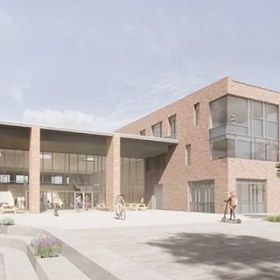Westminster, we have a (£11 billion) problem
It’s time to get over the fixation on what teachers are doing and fix the buildings in which they’re doing it, says Mark Wilson
In Instruction to Deliver: Fighting to Transform Britain’s Public Services, Sir Michael Barber wrote that the quality of an education system cannot exceed the quality of its infrastructure. I agree.
A recent report from the National Audit Office revealed the astonishing (and shameful) fact that 700,000 of our children are attending schools requiring major repairs that are not fit for purpose. The same report identified that government does not have sufficient information to manage the ‘critical’ risks to the safety of pupils and staff from learning and working in these buildings.
What on Earth are we saying to our children and education professionals if we expect them to spend their days in schools that are quite literally falling down around their ears and exposing them to safety risks?
The English school system’s thirty-plus year, downstream, what’s-happening-in-the-classroom obsession has been a key contributor to what is now an £11.6 billion funding gap in meeting school building condition needs – despite education spending accounting for approximately 5 per cent of GDP.
Investment in crucial public assets has been systematically deprioritised in favour of short-term, frontline fixes. At the current rate of new school building, a full refresh of the school estate in England will take over 400 years. Even the new schools that are being built have a lifespan of 60 years. I do not have to point out that the numbers don’t add up.
In May 2022, I personally wrote to the chancellor of the exchequer, sharing my experiences as a MAT leader. I emphasised chronic under-investment, neglected maintenance, health and safety issues and dangerous practices I had witnessed across various local authority areas. This is not a localised problem; it is a national crisis that demands urgent attention.
To tackle this issue, we must re-evaluate how we measure school effectiveness and the role of strategic authorities responsible for schools. Every school administration should have a comprehensive, costed and committed investment plan prioritising the maintenance and improvement of the infrastructure they are entrusted to uphold.
We must shift attention to ensuring that public-realm infrastructure receives the attention and funding it deserves. Achieving this shift will require support and a fundamental overhaul of the current accountability framework. We must ask ourselves when the condition of our school estate becomes a matter of sufficient concern to trigger decisive action.
We must in parallel explore solutions to address the infrastructure funding gap. Developers have long advocated for the construction of new schools, gifting them to the nation as part of their new-build programmes. There is currently no legislative mechanism to facilitate such transactions, leading to the rejection of hundreds of millions of pounds that could have contributed to resolving our £11.6-billion problem.
It is also time to reconsider the role of private finance initiatives (PFI) in financing school buildings. While repayment costs and perceived inefficiencies tarnished their reputation, PFI projects initially garnered enthusiasm. They could again if it was pointed out that PFI-funded schools boast well-maintained facilities that remain fit for purpose while non-PFI schools from the same era have suffered twenty-five years of under-prioritisation, contributing significantly to the ever-widening infrastructure gap.
While there are legitimate concerns regarding the costs associated with PFI, these challenges can be mitigated through long-term planning and a comprehensive understanding of budgetary considerations. PFI may have been an expensive way to fund new schools, but the argument that PFI-funded schools have not been able to provide sufficient resources to the frontline just doesn’t stack. PFI is not the bogeyman it has been made out to be.
All young people deserve to learn in a safe and weather-tight school building. An £11.6 billion shortfall in infrastructure needs means that we cannot afford to dismiss any potential solutions. This investment is not just in bricks and mortar but in the future of our society and the wellbeing of generations to come.
We need bold action to create an educational landscape that is more than just safe – one that truly supports the growth and success of all our children. And to deliver that, politicians must start looking upstream for the fixes.
Source: Schools Week




Leave a Reply
Want to join the discussion?Feel free to contribute!